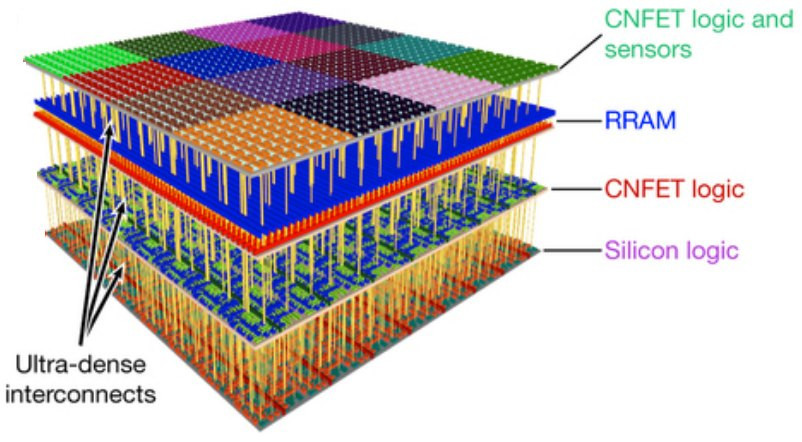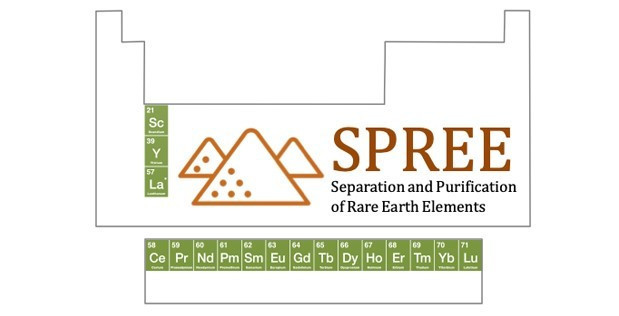Based on ERI, the Electronics Resurgence Initiative (ERI) adopted by the US government in 2017, reinforced by the Chips and Science Act also adopted by the government in 2022, the US technology agency DARPA has launched several important programs in 2022 and 2023 that serve to secure the future of microelectronics in the USA. Several projects are briefly presented in this article.
 Fig. 1: DARPA headquarters in Baliston (Virginia)The Defense Advanced Research Projects Agency (DARPA) of the US Department of Defense (DoD) is the world's most advanced research agency. This is demonstrated by the large number and type of research topics it initiates or leads. They are aimed at solving many military and civilian problems that are currently considered important for the security and further development of the USA(Fig. 1). The research agency based in Baliston (Virginia) only has around 250 employees, but they are generally among the best scientific 'civil servants' in the country [1].
Fig. 1: DARPA headquarters in Baliston (Virginia)The Defense Advanced Research Projects Agency (DARPA) of the US Department of Defense (DoD) is the world's most advanced research agency. This is demonstrated by the large number and type of research topics it initiates or leads. They are aimed at solving many military and civilian problems that are currently considered important for the security and further development of the USA(Fig. 1). The research agency based in Baliston (Virginia) only has around 250 employees, but they are generally among the best scientific 'civil servants' in the country [1].
The tasks carried out by DARPA in cooperation with numerous universities, private research laboratories and companies in the country have one main goal: to help secure the country's claim to supremacy in the world. With a budget request of $4.1 billion for fiscal year 2023, the agency is largely behind uncompromising defense and civilian research efforts, including human-machine interfaces, artificial intelligence and space. DARPA is one of the most important scientific and technological "brains" of the US in both the technical and IT sectors. This article presents some examples of ongoing research topics that address both fundamental solutions for the general advancement of microelectronics in the country as well as specific electronics topics.
Almost all of the projects presented are based on the Electronics Resurgence Initiative (ERI), which was adopted by the US government in 2017 and subsequently implemented by DARPA with specific supporting programs. It is in fact the most important comprehensive framework for research and development work on electronics in the USA. DARPA launched ERI in response to nationwide concerns about the state of microelectronics at the time. The goal of ERI is to fundamentally help ensure U.S. leadership in next-generation, cross-functional microelectronics research, development and manufacturing. In 2022, ERI was updated to ERI 2.0 with new expanded goals.
A certain irony of history is that DARPA was established in 1958 at the direction of President Eisenhower after the Soviet Union launched the world's first Sputnik into orbit in 1957 and the U.S. wanted to eliminate the noticeable backlog in space technology.
Launch of the JUMP 2.0 program
In 2018, DARPA launched the JUMP 1.0 program. JUMP is the abbreviation for 'Joint University Microelectronics Program'. After its five-year run, it has been continued as JUMP 2.0 since 2023, similar to ERI 2.0. It is a DARPA program that was launched in collaboration with the non-profit company Semiconductor Research Corporation (SRC). It is a consortium of cost-sharing industry partners that oversees the agreed work and finances it together with DARPA. In 2018, more than $150 million was earmarked as the minimum base budget, of which DARPA contributed 40 percent and the consortium partners a total of 60 percent.
JUMP consists of a half-dozen university-based research centers, each focused on a specific technology topic, that together support fundamental microelectronics research by hundreds of professional scientists and their students. The goal is to catalyze innovation to increase the performance, efficiency and overall capabilities of broad classes of electronics systems for commercial and military applications. As such, JUMP is effectively a framework program for the practical future of electronics or microelectronics under the ERI umbrella.
Launched in January 2023, JUMP 2.0 is broader in scope than its predecessor, both in terms of the number of participants and content. It takes into account the further development of electronics itself and information technologies that has taken place in recent years(Fig. 2). Consequently, JUMP 2.0 is designed to accelerate US progress in information and communication technologies and is therefore a very important component of ERI 2.0 [2].
From DARPA's perspective, the consortium established under JUMP 2.0 will conduct high-risk but hopefully high-reward research in seven thematically structured centers. Each multidisciplinary center will focus on an overarching research topic that has been identified as key to overcoming new technical challenges. The interests defined in the project planning, which are driven by an increasingly networked world and a rapidly changing microelectronics landscape, are to be realized through long-term as well as trend-setting centralized research. JUMP 2.0 is designed to help keep the U.S. at the forefront of microelectronics and achieve breakthroughs in defense and science.
The new JUMP seeks to significantly improve the performance, efficiency and capabilities of a range of electronic systems. Novel materials, devices, architectures, algorithms, designs, integration techniques and other innovations will be at the center of problem solving for next-generation information and communication challenges. To this end, the centers will focus on the seven complementary research topics formulated in JUMP 2.0, which will be led by the following university-led centers:
- Cognition: next-generation AI systems and architectures (Center for the Co-Design of Cognitive Systems, Georgia Institute of Technology)
- Communication and Connectivity: Efficient Communication Technologies for ICT Systems (Center for Ubiquitous Connectivity, Columbia University)
- Intelligent Sensing to Action: Sensing capabilities and embedded intelligence to enable fast and efficient action generation (Center on Cognitive Multispectral Sensors, Georgia Institute of Technology)
- Systems and architectures for distributed computing: Distributed computing systems and architectures in an energy-efficient computing and accelerator fabric (Evolvable Computing for Next Generation Distributed Computer Systems, University of Illinois Urbana-Champaign)
- Intelligent Memory and Storage: New Memory Chips and Memory Arrays for Intelligent Storage Systems (Center for Processing with Intelligent Storage and Memory, University of California San Diego)
- Advanced Monolithic and Heterogeneous Integration: Novel Electrical and Photonic Interconnect Structures and Advanced Packing (Center for Heterogeneous Integration of Micro Electronic Systems, Penn State)
- High-performance energy-efficient devices: Novel materials, devices and interconnect technologies to enable next-generation digital and analog applications (SUPeRior Energy-efficient Materials and dEvices or SUPREME, Cornell University).
- Further information on JUMP 2.0 can be found at [3].
NGMM - What's next for packaging in microelectronics?
In August 2022, DARPA announced NGMM (Next-Generation Microelectronics Manufacturing), a new program that focuses on the further development of semiconductor chip packaging and in fact already implements JUMP 2.0 or correlates with it. NGMM's task will be to drive microsystem innovations beyond 2D limitations towards 3D.
With a focus on the future wave of microsystem innovations, DARPA has selected and commissioned eleven organizations to begin work on the NGMM. Phase zero will focus on fundamental research to support the next steps in creating a domestic center for 3D heterogeneously integrated microsystems (3DHI) manufacturing [4].
The selected participants are well-known and consist of the following companies and universities: Applied Materials, Inc, Arizona State University, BRIDG, HRL Laboratories, Intel Federal, North Carolina State University, Northrop Grumman Space Systems, Northrop Grumman Mission Systems, PseudolithIC, Raytheon Technologies, and Teledyne Scientific & Imaging. It is obvious that the focus will be decisively on military technology, as the companies mentioned are all top US companies in this sector.
Dr. Carl McCants, Special Assistant to the DARPA Director for the Electronics Resurgence Initiative (ERI), said of the new program, "This is a high-risk mission to rethink manufacturing science and create the U.S. infrastructure for tomorrow's microelectronics by addressing the thermal, electrical, mechanical and design challenges associated with them. Our work requires significant research advancements that directly align with DARPA's willingness to take risks on disruptive technology breakthroughs."
NGMM's Phase 0 performers are working to define, analyze and make expert recommendations on representative 3DHI microsystems. They are also identifying the necessary equipment, processes, hardware and software tools, and facility requirements to manufacture these microsystems. The results of the detailed analyses will be incorporated into future program phases.
The development of 3DHI technologies creates the possibility of stacking separately manufactured components - chips or wafers originating from different equipment and containing different semiconductors and materials - into a single package according to the modular principle(Fig. 3, 4). In the realization of 3DHI microelectronics, which includes various materials beyond silicon, NGMM focuses on revolutionary improvements in functionality and performance. NGMM's results are therefore crucial to ensuring that the USA has the opportunity to secure its leading role in the modern microelectronics of the future.
 Fig. 3: NGMM wants to overcome the limits of 2D microelectronics
Fig. 3: NGMM wants to overcome the limits of 2D microelectronics
 Fig. 4: 3D chip modules open up new possibilities for integration and miniaturization
Fig. 4: 3D chip modules open up new possibilities for integration and miniaturization
Like JUMP 2.0, NGMM is a cornerstone of ERI 2.0. DARPA's ERI Summit 2023 in Seattle from August 22 to 24 was an important forum for further discussions on the implementation of both ERI 2.0 in general and NGMM in particular [5]. Leading representatives from AMD, NVIDIA and Intel, among others, reported on the status of their contributions to ERI 2.0 and NGMM and the Chips and Science Act passed by the US government in August 2022. The variety of topics to be addressed is reflected in the following presentations, for example:
- New applications for complex 3D microsystems (Intel)
- 3DHI for aerospace and defense applications: State-of-the-art edge computing and high-bandwidth communications (Boeing)
- Low-cost and design-flexible 3D IC packaging solutions (Samsung Electronics U. S.)
- Challenges and opportunities in 3D IC testing (Intel)
- Next generation AI hardware for future microsystems (IBM)
- Technical innovations to improve supply chain security (Qualcomm)
- The Materials Genome Initiative & Microelectronics: Designing the Next Generation of Materials (National Institute of Standards and Technology - NIST).
Recovery of rare earth elements from electronic waste - RPOD
 Fig. 5: The RPOD logo demonstrates that the US Department of Defense will focus more on the recycling of necessary materials in the futureWiththe changes in the world's political situation, the extensive independence of US industry from raw material imports has become a burning issue, especially in the electronics industry. Accordingly, on June 10, 2022, DARPA launched the Recycling at the Point of Disposal Program (RPOD)(Fig. 5) to tackle the challenge of recovering critical elements from end-of-life electronics hardware (e-waste) more intensively than before. The program aims to develop technological platforms with a small footprint that also consume little energy in the extraction process and generate little waste.
Fig. 5: The RPOD logo demonstrates that the US Department of Defense will focus more on the recycling of necessary materials in the futureWiththe changes in the world's political situation, the extensive independence of US industry from raw material imports has become a burning issue, especially in the electronics industry. Accordingly, on June 10, 2022, DARPA launched the Recycling at the Point of Disposal Program (RPOD)(Fig. 5) to tackle the challenge of recovering critical elements from end-of-life electronics hardware (e-waste) more intensively than before. The program aims to develop technological platforms with a small footprint that also consume little energy in the extraction process and generate little waste.
DARPA takes into account the fact that around 50 million tons of e-waste are generated annually in the world from consumer and industrial electronics. Their raw material value is estimated at around 62.5 billion US dollars or 55 billion euros. Only a single-digit percentage fraction of this e-waste, which contains precious metals and rare earths, has been recycled to date. Although the pyro- and hydrometallurgical processes currently used are well researched, they are only suitable for the recovery of elements with large-volume components in e-waste, but not for the recovery of multiple small-volume elements such as rare earths. For the latter, there is a lack of knowledge about chemical processes that can be used to recover them decentrally in smaller plants.
RPOD will assess the technical feasibility of the recovery (separation and co-extraction) of seven critical chemical elements with small volume fraction in old electronics such as gold, silver, palladium, etc.. Separation is the extraction of different elements one after the other, and co-extraction is the simultaneous extraction of a specific list of elements from a starting material containing a mixture of elements with other components [6].
The primary reason for the work is to minimize the impact of disruptions in the supply chain of such critical elements to the U.S. that are procured or processed overseas and are essential to high-performance DoD hardware. The Department of Defense is particularly mindful of the heavy dependence on China for raw material supplies.
The teams involved in the RPOD program are developing novel extraction chemistries and exploring practical limits of yield, extraction efficiency, and purity of the selected elements to be recovered from a feedstock representative of Department of Defense (DoD) commercial electronic scrap. The technology for both separation and co-extraction of the elements will then be demonstrated in a small-scale facility called a benchtop hardware prototype.
The PROD research teams selected by the DoD or DARPA include Arizona State University, Iowa State University, and the Massachusetts Institute of Technology with the following approaches:
- Arizona State University, in collaboration with TG Companies LLC, will develop an enhanced hydrometallurgical process based on a combination of selective leaching and electrowinning. Their approach aims to use a regenerative process to reduce the amount of chemicals and associated waste generated by conventional processes.
- Iowa State University will develop an innovative approach to surface and interface engineering to advance the segregation of alloys to recover the desired target materials.
- The Massachusetts Institute of Technology will utilize the selectivity and specificity of the formation of sulfides from a mixture of elements. The aim is to use electrochemical reduction to recover high-purity, critical materials.
The research work is led by Prof. Terence Musho (West Virginia University). His deputy is Prof. Edward Sabolskyapart from the same university, who has already carried out preliminary scientific work on the separation of elements. Both are of the opinion that by generating very high temperatures in a very short time, a modular system can be created which is well suited to being moved in modules from recycling site to recycling site, e.g. by US Navy ships [7]. This would also correspond to the ideas of the DoD.
Raw materials from domestic overburden - SPREE
Rare earth elements (REEs) are used in a range of products and manufacturing processes, including permanent magnets, catalysts, fiberglass and phosphor displays. REEs consist of 17 elements, including scandium, yttrium and the lanthanide series, and are critical in modern technologies for wind turbines, cell phones and electric vehicles. The extraction, separation and purification of REEs from a complex feedstock has been both environmentally damaging and energy inefficient, making it difficult to obtain approval in the United States.
DARPA already held a hybrid workshop on July 25, 2022, in which an overview of the tasks to be solved with regard to rare earths in the USA was given, in particular the potential possibilities for the separation and purification of rare earth elements (SPREE for short) [8]. At the same time, a technical discussion took place on the opportunities that would arise for research institutions and companies as part of the Advanced Research Concept (ARC). The aim of the ARC initiative is to accelerate the pace of innovation by rapidly researching and analyzing a large number of promising new ideas.
Thus, the SPREE ARC project sought ideas to investigate the following question: How can REEs relevant to the DoD be cleaned using environmentally sound, energy efficient and commercially feasible techniques that can also be integrated there by the U.S. mining sector?
"Solving the technological challenge of separating rare earths from each other is critical to building a secure domestic supply chain of strategic materials and requires a re-examination of the fundamental physics and chemistry of these elements," noted DARPA Innovation Fellow Dr. Rebecca Chmiel. The goal of the SPREE workshop was to provide government and industry with insights into the field, information on how to apply for a SPREE project, and support researchers who have new ideas on how to realize them.
From the mid-1960s to the mid-1990s, the United States was the world's largest supplier of REEs. Today, it imports nearly 100% of the REE minerals used in commercial products and exports some domestically mined REE minerals abroad for commercial processing.
Reliance on foreign sources for processing and purification represents a significant vulnerability for the U.S. supply chain that could be mitigated by the development of a domestic manufacturing industry to extract and purify REE resources. However, widely used methods for extracting and separating REEs can be inefficient, energy intensive, complex, and generate large amounts of hazardous waste due to the use of toxic reagents and solvents. This leads to domestic licensing issues due to the predicted environmental impacts. These in turn represent a significant commercial barrier to the domestic mining and refining of REEs. SPREE aims to develop novel approaches to separate REEs from a commercially viable source blend and convert them into a commercially viable product in an economically viable and environmentally friendly manner.
 Fig. 6: SPREE focuses on methods for separating and purifying indigenous rare earth elements
Fig. 6: SPREE focuses on methods for separating and purifying indigenous rare earth elements
Thermal management in 3D chip stacks - MiniTherms3D
A difficult problem in the realization of compact 3D chip stack structures is that the heat generated per unit volume increases disproportionately with the degree of integration. This in turn can lead to reliability problems, which can be exacerbated in particular if the electronics are used at elevated ambient temperatures. The complexity of the tasks to be solved prompted DARPA to launch an extra program on this topic in addition to 3DHI. In the new 'MiniTherms3D Program', the technology agency is looking for thermal management solutions that advance high-performance processing while overcoming size, weight and power constraints in high-density, stacked designs [9]. In particular, the question is how to pack the maximum number of chips in the smallest possible space for computing and how to reliably dissipate the heat generated by high-performance processing. This is a basic prerequisite for the growth of system capabilities, for example in high-frequency systems, image analysis and high-performance computers for tactical use. MiniTherms3D is a 48-month, three-phase program.
It is increasingly recognized that 3DHI, where different circuit types and materials are integrated in a 3D stack of multiple layers, promises enormous performance benefits. However, thermal management technologies are currently limiting implementation. While chip stacking will be a critical part of the future of computing, challenges in dissipating heat from internal processing components remain an obstacle to significant progress. MiniTherms3D is thus a central part of what ERI 2.0 aims to achieve.
Several ongoing DARPA projects are concerned with the realization of new solutions in the area of special components or component groups. Examples:
- BRIDGES: As the first topic under the 'Bringing Classified Innovation to Defense and Government Systems' (BRIDGES) initiative, in April 2023 the technology agency asked for breakthrough ideas from small businesses and non-traditional defense companies for novel antenna designs, associated materials, manufacturing or processing. The topic area aims to explore new designs that would offer significantly higher performance or a significant reduction in size, weight, power and cost (SWaP-C) compared to current solutions [10].
- HOTS: The new 'High Operational Temperature Sensors' (HOTS) program, launched in May 2023, will work towards the development of microelectronic sensor technologies that enable high bandwidth and high dynamic range signal acquisition in very harsh conditions, e.g. extreme temperatures [11]. Currently, many of the defense and industrial systems that rely on sensors are exposed to harsh environments that exceed the performance of today's powerful physical sensors. This means that these systems must be designed and operated with reduced performance and excessive margins. They are limited by the uncertainty of their thermal environment.
- ATOM: The goal of the ATOM (Accelerating discovery of Tunable Optical Materials) research program, announced in June 2023, is to discover and develop new tunable optical materials in the visible and mid- and long-wave infrared regions of the electromagnetic spectrum [12]. The ultimate goal is to enable solid-state materials that can be optically tuned on demand across multiple spectral regions without the need for physical filtering or mechanical inputs to achieve this dynamic functionality. Such a breakthrough could enable small size, light weight and low power optical devices to perform a wide range of combat missions.
These examples, and many more that cannot be listed here due to space constraints, underscore the critical importance of the US technology agency DARPA for the targeted advancement of strategically important areas of science and technology in the US. Unfortunately, Germany lacks a similar institution, which is unlikely to be advantageous for the German research landscape and industry.
References
[1] https://en.wikipedia.org/wiki/DARPA (accessed: 23.10.2023).
[2] www.darpa.mil/news-events/2023-01-04 (Retrieved: 23.10.2023).
[3] www.src.org/program/jump2/ (Retrieved: 23.10.2023).
[4] www.darpa.mil/news-updates/2023-07-20 (Retrieved: 23.10.2023).
[5] https://eri-summit.darpa.mil/2023-agenda (Retrieved: 23.10.2023).
[6] www.darpa.mil/program/recycling-at-the-point-of-disposal (Retrieved: 23.10.2023).
[7] https://idstch.com/technology/electronics/darpa-rpod-developing-e-waste-recycling-to-address-supply-chain-disruptions-of-critical-elements/ (Retrieved: 23.10.2023).
[8] www.darpa.mil/news-events/2023-07-12 (Retrieved: 23.10.2023).
[9] www.darpa.mil/news-events/2023-01-25a (Retrieved: 23.10.2023).
[10] www.darpa.mil/news-events/2023-04-14 (Retrieved: 23.10.2023).
[11] www.darpa.mil/news-events/2023-05-12 (Retrieved: 23.10.2023).
[12] www.darpa.mil/news-events/2023-06-07 (Retrieved: 23.10.2023).


